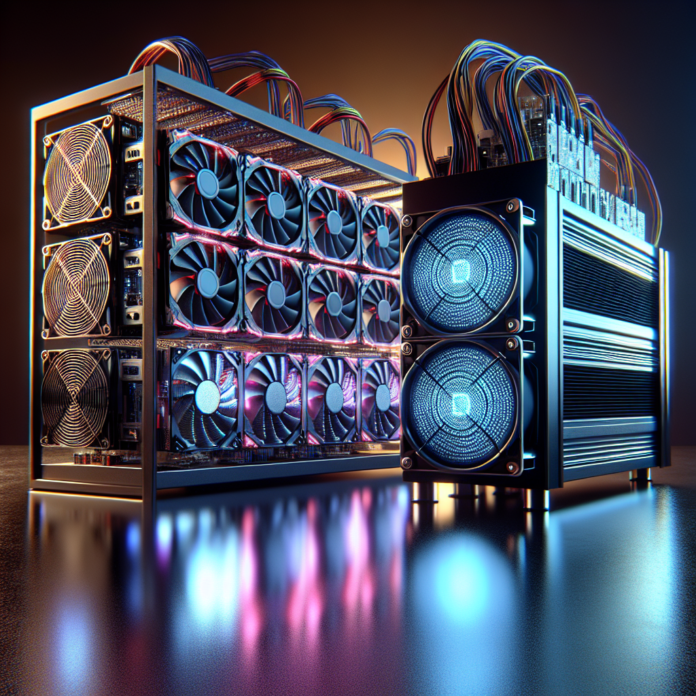In the continuously evolving landscape of cryptocurrency mining, two primary methods have become the focal point for miners: GPU (Graphics Processing Unit) mining and ASIC (Application-Specific Integrated Circuit) mining. Both methodologies have their unique advantages and caveats, shaping the decision-making process for new and veteran miners alike. In this comprehensive comparison, we explore the intricacies of GPU and ASIC mining to aid you in determining which might be the best fit for your mining endeavors.
Understanding GPU Mining
GPU mining utilizes the computational power of graphics cards commonly used for gaming and professional rendering work. These versatile units are capable of handling the complex mathematical equations necessary to mine a variety of cryptocurrencies.
Advantages of GPU Mining
- Flexibility: GPUs are not tied to a specific cryptocurrency algorithm, making them capable of mining a wide array of coins. This adaptability (CryptoCompare) safeguards against market volatility as miners can quickly switch to more profitable coins if necessary.
- Resale Value: Graphics cards have a significant resale value (eBay Electronics), as they can be used for purposes beyond mining, such as gaming and video editing.
- Upgradability: Miners can incrementally upgrade their GPU rigs, rather than investing in a whole new system (Tom’s Hardware Guide), making it a more budget-flexible option.
Disadvantages of GPU Mining
- Less Power-Efficient: GPUs are less energy-efficient than ASICs, leading to higher electricity costs.
- Lower Hash Rates: Generally, GPUs offer lower hash rates compared to ASICs, meaning potentially lower mining yields.
Understanding ASIC Mining
ASIC miners are hardware systems engineered specifically for mining cryptocurrency. They are designed to excel at a single computational task and are optimized for mining a particular algorithm.
Advantages of ASIC Mining
- High Efficiency: ASIC miners are known for their high hash rates and energy efficiency, which can translate to higher profitability (CoinWarz Mining Calculators).
- Plug-and-Play: These units are typically ready to use out of the box and require less technical know-how compared to setting up a GPU mining rig (Bitmain).
Disadvantages of ASIC Mining
- Limited Flexibility: Being designed for specific algorithms, ASIC miners can become obsolete if the target cryptocurrency alters its protocol.
- No Resale Value Beyond Mining: Unlike GPUs, ASICs do not have alternative uses outside of mining, so they have little to no resale value if they become unprofitable.
Financial Consideration
The initial cost, electricity consumption, and potential returns are crucial financial factors when considering GPU vs. ASIC mining. Websites like Whattomine offer calculators that compare the profitability of various cryptocurrencies across different mining hardware, an essential tool for any decision-making miner.
Environmental Impact
The environmental impact of mining is an issue that cannot be overlooked. ASIC miners consume a lot of energy but are more efficient than GPUs, potentially reducing the carbon footprint per unit of cryptocurrency mined.
Conclusion
When choosing between GPU and ASIC mining, consider your budget, technical expertise, desired level of flexibility, and commitment to mining. Each system has its set of trade-offs that should align with your mining strategy and goals. Whether you opt for a GPU or ASIC, staying informed and adaptable in the fast-paced crypto market is key to mining success.
Remember to visit authoritative resources and forums to keep up-to-date with the latest developments in the mining industry, as the right knowledge can make all the difference in your mining profitability.
[Disclaimer: The content of this article is for informational purposes only and does not constitute professional financial advice. Always perform your own research before making any investment decisions related to cryptocurrency mining.]




 AGF-B.CO
AGF-B.CO